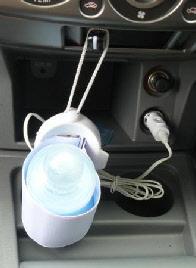2017 Kia Rio review movie

2017 Kia Rio review movie
Roomy Rio is utter of surprises after a latest update, and keeps its industry-leading warranty
Kia introduced the fourth generation of its popular Rio light hatch earlier this year, bringing with it a European-inspired look and enhanced rail.
The fresh Rio is roomier and feels more upmarket than the model it substitutes, with an inviting cabin and fresh technology that brings a sense of maturity to the light car segment.
WHAT STANDS OUT?
Kia went back to the drawing board with its exterior design, which was penned by its design centres in Germany and California and looks fresh compared to some of its ageing competitors.
The three-door version has been ditched, in favour of an all-five-door line-up that’s slightly fatter than the previous model, with a 10mm longer wheelbase, but a slightly lower roofline to give it a bolder stance.
As well as resulting in excellent gam, head and shoulder room for a car this size, the extra dimensions resulted in boot space going up thirty seven litres to a class-leading 325-litres, which increases to a considerable 980-litres with the 60/40 split read seats folded down.
WHAT’S Inwards?
Interior aesthetics have also been transformed with a floating 7.0-inch touchscreen, which adds Apple CarPlay and Android Auto connectivity, a detailed gauge cluster and drop down air-conditioning controls to provide a European feel.
The seats, which are cloth in the entry-level S and Si, and fake leather in the range-topping SLi, are rock-hard but comfy and there’s slew of storage including door bins and a space in front of the gearstick to place phones and wallets. Rio is the very first car in its class to feature front and rear USB ports.
As well as the touchscreen all Rio variants are tooled with a reversing camera and rear parking sensors, automatic headlights and power windows.
Cruise control, satellite navigation, digital radio, LED daytime running lights and alloy wheels are key additions to the mid-spec Si, while range-topping SLi gains automatic wipers, climate control air-conditioning, electrified sunroof, some extra bling and 16-inch alloy wheels with broader tyres for mode grip.
Speaking of grip, the two thousand seventeen Kia Rio treats well and feels a lot more refined than before. Its steering is nicely weighted and it has a well-controlled rail on suspension that has been tuned for local conditions by Kia’ Australian engineers.
Unluckily Kia didn’t improve spectacle accordingly. The 1.4-litre engine carried over from the older model lacks oomph, especially when coupled with the four-speed automatic transmission. It’s better with the six-speed manual transmission, however that is only available with the entry-level Kia S.
Kia also elected not to add advanced driver assistance such as automatic emergency braking, which is becoming more common in smaller cars as models are substituted or upgraded.
CHOOSING YOURS
The mid-sped Rio Si provides a Goldilocks mix of value and features that justify its $2400 premium over the Rio S automatic.
If you’re on a taut budget and want a zippier drive, the Rio S with the six-speed manual gearbox provides excellent value, albeit without some bells and whistles.
SUMMING UP
Success in the light car segment is largely value driven and the Kia Rio provides this in an elegant package that’s both practical and pleasant to drive.
While it lacks autonomous emergency braking and a punchy engine, acute pricing and Kia’s seven-year warranty should be enough to lure would-be buyers.